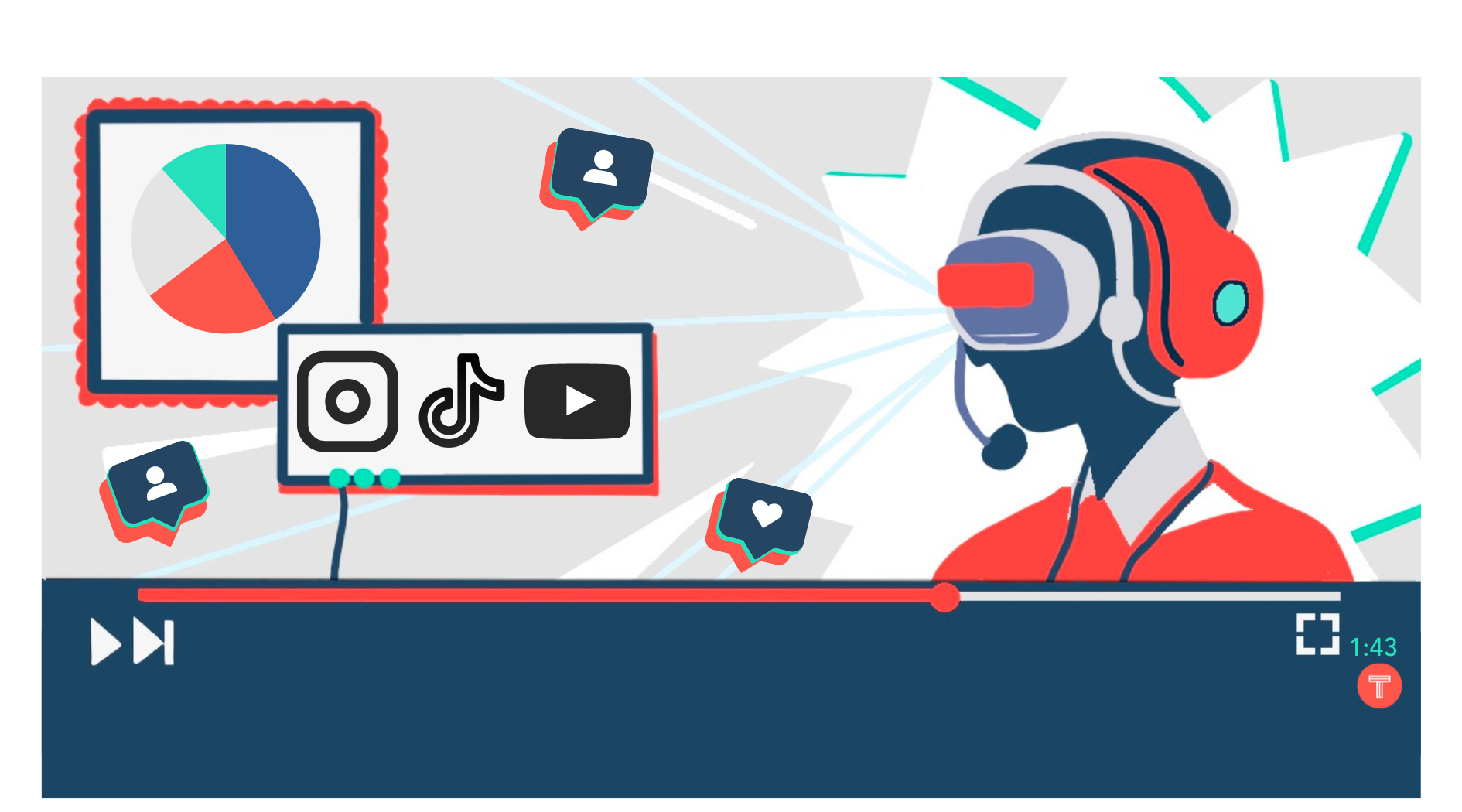The world is a noisy place, especially online.
Every day, 2.75 million blog posts get published on WordPress sites alone. In those same 24-hours, Instagram will see 95 million photos and videos get shared and 500 million Tweets will go live. And these numbers are increasing.
When we say that the importance of user generated content is higher than ever, we’re talking about how UGC can help your brand stand out in this noisy world. Paid brand ambassadors can boost awareness, but these types of marketing campaigns don’t play into what consumers and fans have always been asking for.
Am I going to like this product?
Ultimately, all a consumer cares about is if they’re going to like the product advertised to them. Years of paid advertising that convinced consumers to buy products that were disappointing letdowns have taught them to be much more cautious. This is just one reason why UGC is important.
User-generated content gives brands a chance to show consumers that people just like them loved the product, proving that they will too. It’s social proof 101. If a teenager is looking for something to clear their skin, they may be tempted to use what their favorite celebrity is getting paid to talk about. But it’ll be much more tempting for them to buy a skincare product that shows somebody their age, struggling with the same kind of acne, with their same skin type (oil, dry, or combination).
Sure, the celebrity endorsement is great—and that’s why there’s a time and place for all levels of influencers in user-generated content — but what’s a stronger sell?
- Somebody getting paid to make a product look cool?
- A happy customer showing the real results of using that product?
Let’s look at why user-generated content is so important, specifically its involvement in the buyer’s journey.
Why Does User-Generated Content Even Matter?
The importance of UGC comes down to the buyer’s journey. The journey starts with a consumer learning about a brand and only ends when the customer decides not to buy from that brand again. As long as the customer continues to buy more products, the buying journey continues.
User-generated content enhances many steps of the buyer’s journey:
- When a consumer first learns about a product or service
- When a consumer compares the product or service to others
- When a customer orders their product or service
- When a customer receives their product or service
- When a customer gets the benefit/result of their product
- When a customer engages and shares their experience with the product or service
In the example above, the most exciting parts of the buying journey for a teenager trying out a new skincare regimen is going to look like this:
- Buys skincare products online
- Gets skincare products delivered
- Starts to see skin improvement with a decrease in acne
- Shares their experience
Generally, that’s how marketers look at the most exciting parts of the buying journey. They create content marketing strategies that get a customer to purchase but tend to forget that the most exciting part of the buying journey comes after that.
Let’s take a look at this example again, but with a little more reality tied into the situation:
- The teenager gets their parent to buy their skincare product online
- The skincare product arrives in the mail and the teenager takes 5 15-second Instagram videos of themselves unboxing the new skincare
- The teenager starts to see an improvement in their skin and posts an Instagram selfie to their feed with the caption, “[Brand Name] just did THAT! My skin has never been more clear.”
At the 3 most exciting stages of the buying journey, the customer was happy to create content around their purchase, delivery, and results because they were excited about the experience they were having. They wanted to share their experience with others, and their social media feed became a walking endorsement for this brand through authentic content.
Consumers Want Real Content
User generated content is more important than ever because not only are customers documenting their buying process, they’re also looking for others who have documented the process of the products they want to buy.
- 70% of consumers will consider UGC reviews or ratings before making a purchasing decision
- 41% of consumers will read 4-7 UGC reviews to gain important insights on a product
- Companies can receive a traffic increase of 26% when they share customer reviews on Twitter
Some creators want to get paid for everything (free cake!?). Is this type really the best ambassador for your brand? Are they authentic and trusted? The best content isn’t always intentional. The best content isn’t always the most perfectly framed, beautifully lit photo shoot. Raw and real is believable, and with the amount of noise online, believability is important!
This is where nanoinfluencers and microinfluencers come into the picture. As a brand looking to create more user-generated content, you can leverage smaller influencers to increase brand awareness. They create relevant, authentic promotion for your brand—without the loss of authenticity that comes from working with larger influencers.
Nanoinfluencers have less than 10,000 followers. They’re real people sharing real stories. When it comes to influencer marketing at the 3 most exciting stages of the buying journey, you’re not looking for follower count. You’re looking for trust and authenticity. Content that your prospects will resonate with and believe to be true.
A megainfluencer with 500,000 followers and a 1% engagement rate asks brands to pay a large price tag to get in front of their audience but can’t promise a higher engagement rate than 1%. Leveraging an army of nanoinfluencers with a 10% engagement rate creates an overall high engagement rate that will turn their followers into your customers.
These “influencers” will be regular people that have a small audience that loves their content. And they are marketing gold because generally they’ll be sharing their real experiences and more than happy to receive recognition for their content.
The key is to make sure you’re showing them when it’s a great time to create content and showcase your brand, and you don’t have to pay every person to do that.
Is User-Generated Content Just for Saving Money?
UGC isn’t just about cost savings, in fact it never was. Sure, compared to $1 million US per post, UGC can certainly be considered economical, but the importance of user generated content goes beyond what some call “free content”. We’ve already covered how UGC builds brand authenticity because it puts customers front and center of content campaigns. Remember social proof? People don’t trust brands, they trust real people and UGC creates community. Also, UGC maximizes ROI and drives better results when used in paid ads.
How To Get Good User-Generated Content
Fifty-percent of consumers wish that brands would tell them what content to create and share. When you’re promoting the creation of UGC, you need to tell your customers what you’re looking for.
For each stage of the buyer’s journey, we can ask our customers to create content.
For example, when a customer makes a purchase, in your Thank You email, you can place a link to share their purchase on Facebook, Twitter, or on their Instagram. This link will autofill copy of what they can tell their audience about their purchase. Remember, your audience wishes you would tell them what to post. Give them the option to change the text, but write something that they can work off of or publish directly.
When a customer gets their product delivered, you have a second opportunity to promote UGC. Hashtags are big. On the outside of your box, you can tell your customers to tag your brand or use your hashtag in their Instagram as they’re opening their package. On the inside of the box, you can let them know that if they participate in sharing their unboxing, they’ll have a chance to win a free product, get a discount on their next purchase, or get featured on your social feeds or website. You can also put surprises in your box that they’d want to share with their followers, stickers, or anything else that would make them feel like this is worthy of sharing. Never make them guess which hashtag to use.
Lastly, when a customer gets the benefit or results of your product you want to incentivize them to share it. If you’re an organic, plant-based coffee creamer brand you’ll want to ask your customers to share photos of their coffee or videos of themselves making it. Again, you can promote this with a contest to give away free products, discounts, or prizes.
The key to creating and promoting a good UGC campaign is asking for it at the right moments. Using the most exciting stages of the buying journey, you can ask for UGC at just the moment that your customer was hoping to create some type of testimonial. Give them the template of what you’re looking for and you’ll start to have so much UGC, you’ll need to start organizing it efficiently.
How to Collect and Organize UGC
Collecting UGC can be tricky because, as we said at the beginning of this article, the Internet is a loud place. How are you going to find your brand’s UGC? You can make it easier for yourself by asking your customers to tag you and the right hashtag. The only problem here is that if a customer forgets or decides not to tag you—that content might go into the Internet abyss and never be found again.
To avoid that, you can use a platform like TINT to find and collect UGC for you. Using industry-first visual search technology, TINT helps you filter the very best content.
Once your customers are creating UGC for your brand, you aren’t going to want to throw them into a folder and then sort through them as you need content to post. Best practice is to tag the UGC based on the stage of the buying journey, the product, the offer, etc.
For example, you don’t want all of your unboxing videos to be in the same place as your benefit/result photos and videos. Every time you want to post UGC, you’ll have to scroll through all of your UGC photos and videos to find what you’re looking for. You’ll want to use tags to organize your content so that you can make it as plug and play as possible.
UGC is not dead, in fact it’s more important than ever. And if you’re wondering whether people are willing to share, we’ve found that 72% of users will accept a brand’s request to use their content.
Ready to accelerate your results with user-generated content? We can help. Request a demo today.




